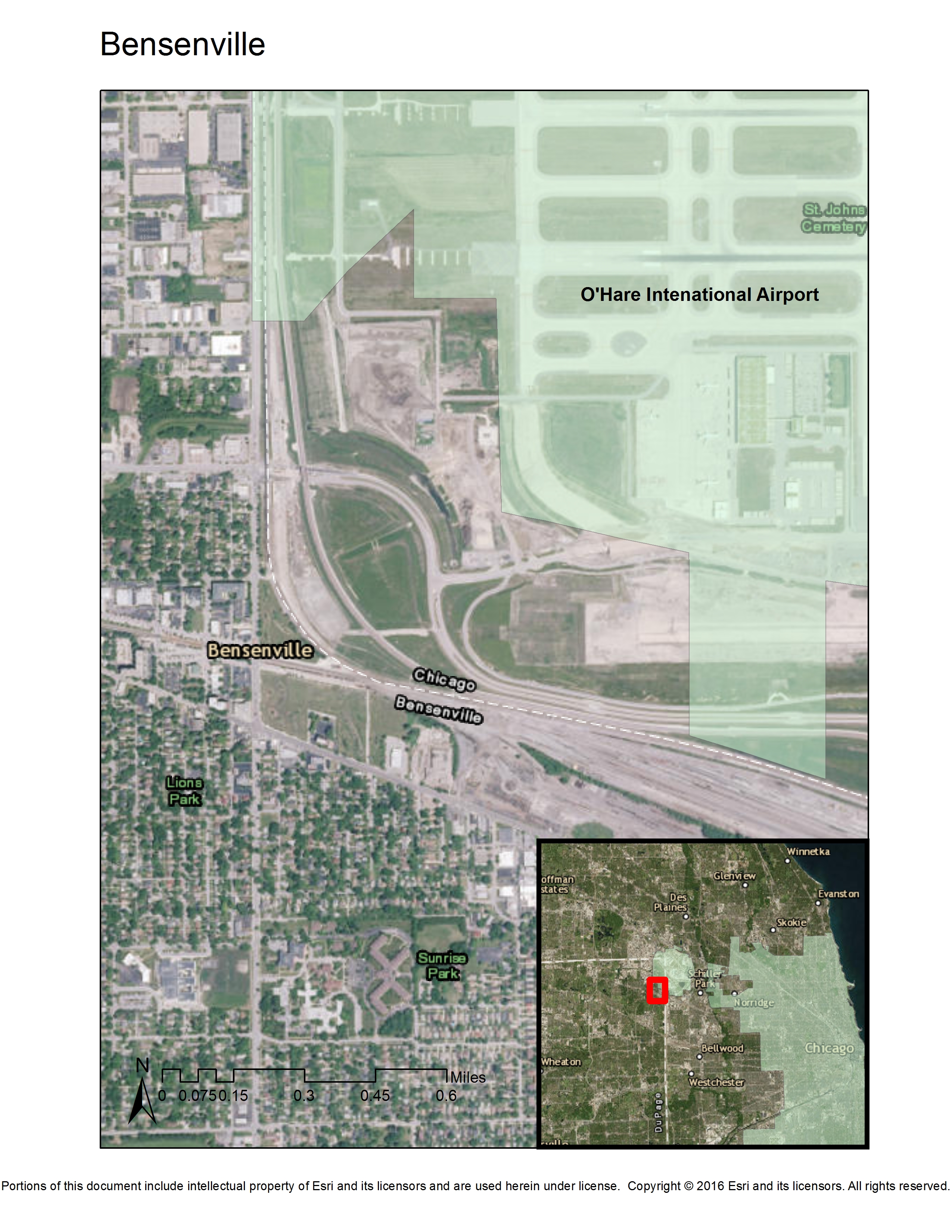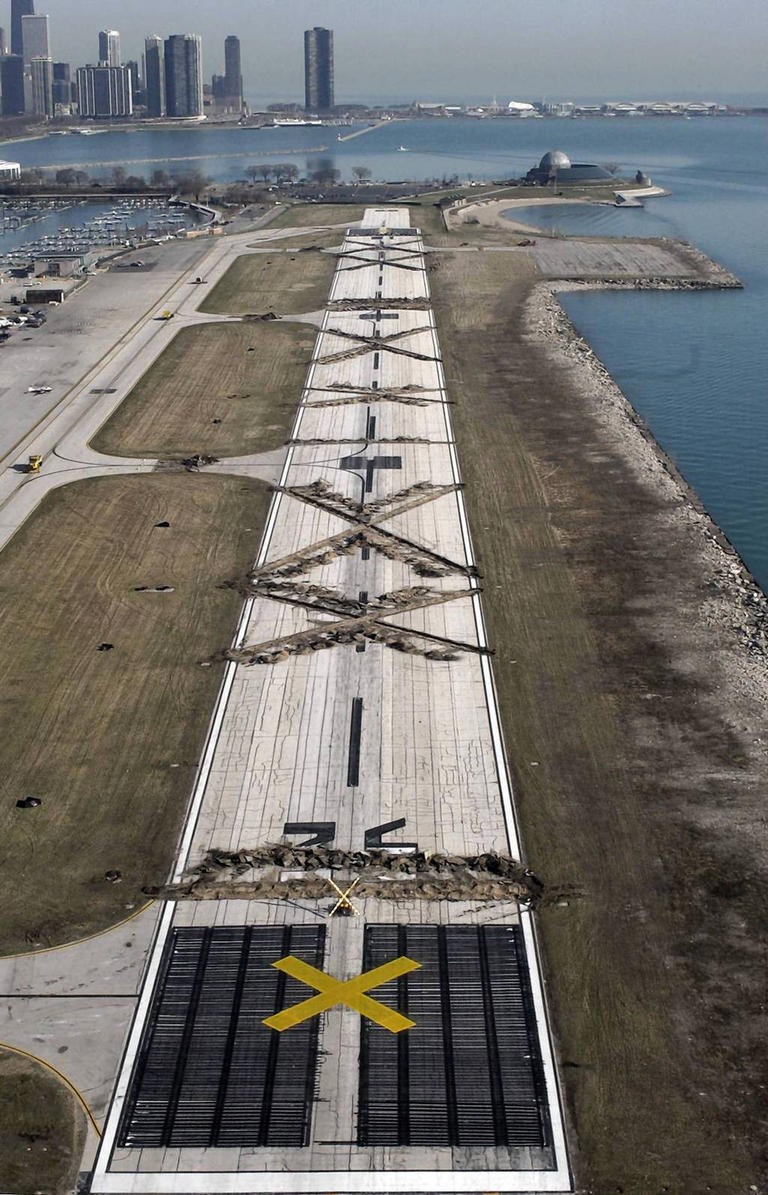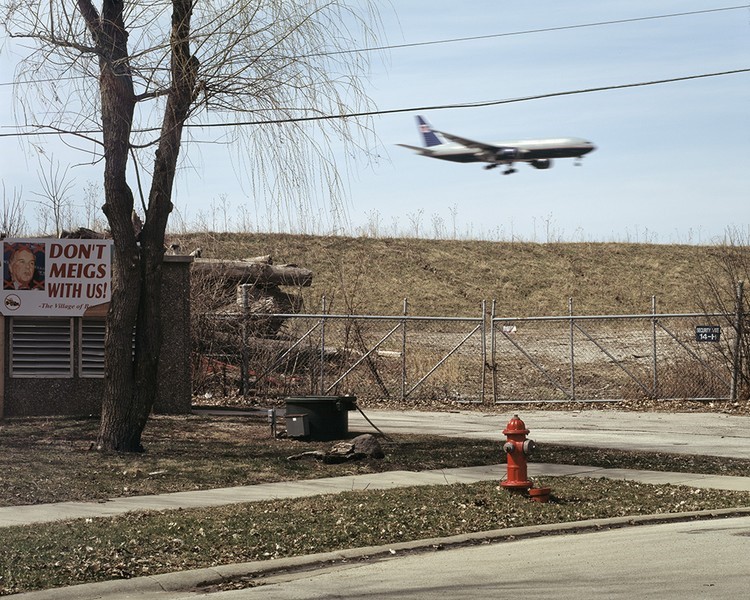Bensenville, IL
In the Way of Progress: Bensenville and the O’Hare Airport Expansion
If I’m in the way of progress, move me. OK? But move me and make it fair.
—Barry Soskin, a Bensenville business owner who was displaced by the O’Hare Airport expansion.
Just as the number of roads and automobiles have expanded substantially since the mid-20th century, so have airports and air travel. In 1950 commercial air travel was not a common mode of transportation for most Americans. It was the kind of travel that corporate executives, movie stars, and the well-to-do made use of routinely. However, in the last half of the 20th century, this all changed. Air travel became travel for the masses. New airports developed in mid-century expanded dramatically and were in need of further expansion by the turn of the century.
Chicago’s O’Hare Airport was one such airport. Regularly competing with Atlanta’s Harts Field and Los Angeles’ LAX for top honors as this country’s busiest airport, the airport handling the most passengers, or the airport with the most departures, O’Hare and Chicago were looking for greater capacity by the 1980s. The nation’s largest city had three major airports—JFK, LaGuardia, and Newark. Chicago only had two—840-acre Midway Airport on Chicago’s southwest side and 7,000-acre O’Hare on the far northwest side. Talk of a third regional airport had emerged in the 1980s. Proposals included development of an airport on Chicago’s far south side in an industrial and working class residential area of the city, 17 miles from Chicago’s Loop; an airport in Gary, Indiana 32 miles away; or an airport in Peotone, Illinois in the far southern suburbs, 46 miles away.

The selection of a place for a third airport was a highly political process. Over and above maintaining the convenience for the largest number of Chicago-based passengers and businesses, the location of a third airport was related to where jobs would be created, what municipality would receive tax revenues from the thousands of businesses in and around the new airport, and even bragging rights for Second City political leaders who were about to see their city drop to third largest in the nation after New York and Los Angeles. And, of course, looming over all of these proposals was the need to take land through an eminent domain process.
After years of haggling, millions spent on feasibility studies, and millions more spent on acquiring some land around Peotone, the third airport idea was shelved. Instead, an expansion of O’Hare Airport was pushed forward in 2001. This allowed the City of Chicago to benefit from any revenues to be added by airport expansion. It also allowed for expansion of an airport that was relatively close to downtown—17 miles away, well-connected to a network of interstates, and linked to downtown by subway train via an extension added in 1984.
With this expansion plan, eminent domain was again in the wings. The additional runway capacity proposed in the O’Hare Modernization Plan called for the taking of homes, businesses, churches, and cemeteries in neighboring Bensenville. In total, it meant the taking, either voluntarily or through the eminent domain taking process, of over 570 houses, businesses, and churches along with two cemeteries. The fact that the City of Chicago reached over a municipal boundary and a county boundary in its use of eminent domain, was highly unusual in the application of eminent domain powers.[1]
A protracted court and media-based battle followed the announcement of the planned takeover. The highly-politicized process involved Richard M. Daley, the son of the long-serving Richard J. Daley. The cast of characters included the Federal government leaders, state officials, mayors of surrounding towns, major airlines, business organizations, and Chicago-area residents themselves. In the world of airports, the heavy-hand of Mayor Richard M. Daley had already been demonstrated in March 2003 when he shut down the small, downtown, lakefront Chicago, commuter plane airport, Meigs Field. He did not do this through a series of open meetings, rather one night he sent in construction equipment to gouge massive “Xs” across the runway making it unusable. Small aircraft stranded at the airport had to use the taxiways as runways days later.

Given this backdrop, it is not surprising that at times the battle to expand O’Hare runways took on the quality of a political soap opera. With the son of Chicago’s legendary political family as a lead character, the expansion became the focus of the media for years. In fact, the 2011-2012 TV series, Boss, a fictional political drama based in Chicago and starring Kelsey Grammer, had a press conference taking place at the city’s airport when the mayor was involved in a battle over toxic waste dumping near the airport. The press conference scene at the airport in front of construction equipment had strange parallels to press conferences connected to the runway expansion held at the airport a few years before. In the real battle against eminent domain takeover in the runway expansion even a play was written documenting the issue. The Waltzing Mechanics production of Over My Dead Body was based on the experiences and stories of Bensenville residents and their ancestors.[3]

Although ultimately unsuccessful in stopping the eminent domain takeover and airport expansion, Bensenville opponents to the expansion, used what they saw as desecration of sacred land—a cemetery—as one major tactic in their court battles. Not unlike Native Americans fighting the destruction of their sacred fishing area along the Columbia River at Celilo Falls, Bensenville residents used protection of a religious cemetery and the State of Illinois’ Religious Freedom Restoration Act in their court filings. The protracted court battle was for naught. The first of the new and reconfigured O’Hare runways opened in October 2013.
[1] Bensenville is in DuPage County just over the border from Cook County, the county in which Chicago is located. The reach of a municipality over county boundaries is not common in eminent domain efforts.
[2] David Klobucar, “Working overnight, construction crews used backhoes to tear up large sections of the runway at Meigs Field in Chicago, effectively shutting down the lakefront airport.” Chicago Tribune. March 31, 2003. http://galleries.apps.chicagotribune.com/chi-130329-meigs-field-northerly-island-pictures/ Accessed March 13, 2016.
[3] Waltzing Mechanics, Over My Dead Body. 2012. Website. http://www.waltzingmechanics.org/info/ Accessed March 16, 2016.

